16 Ways Mid-Century Modern Architecture Took Over the World

Mid-century modern architecture reshaped our visual landscape between the 1940s and 1970s. Bold, sleek, and incredibly practical, these designs broke away from traditional styles to create spaces that felt both futuristic and inviting.
Even decades later, the clean lines and innovative approaches of this movement continue to influence how we design and experience our homes and public spaces.
1. Clean Lines and Simplicity

Gone were the ornate details of previous eras! Mid-century modern brought straightforward, uncluttered designs that spoke to a new generation seeking simplicity.
Architects embraced geometric forms and smooth surfaces that created visual calm. Rooms became more breathable, with furnishings that prioritized function without sacrificing style.
2. Open Floor Plans
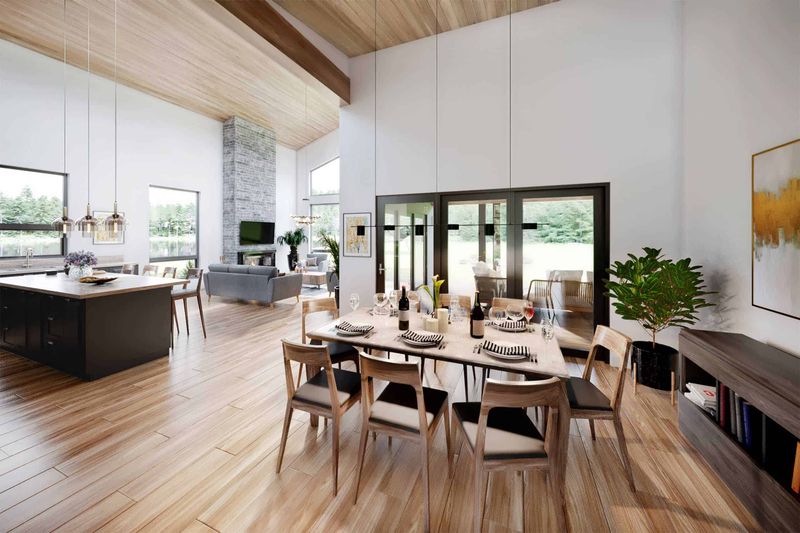
Knocking down walls revolutionized how families interacted! Previously separated cooking, dining, and living areas merged into unified, multi-functional spaces.
Parents could prepare meals while watching children play. Conversations flowed freely between rooms. Such openness created an inclusive atmosphere that transformed everyday living and encouraged social connection among household members.
3. Integration With Nature

Blurring boundaries between outdoors and indoors became a hallmark of mid-century design. Architects carefully positioned homes to capture natural light and showcase surrounding landscapes.
Gardens weren’t just accessories but essential elements of the overall design. Courtyards, atriums, and strategically placed windows invited nature inside, creating living spaces that felt expansive and connected to the environment.
4. Floor-to-Ceiling Windows
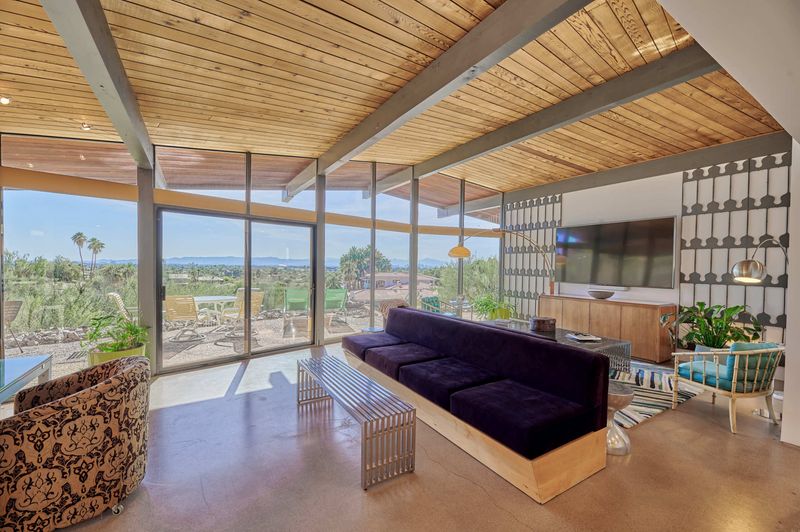
Sunlight poured through massive glass panels, transforming interiors with natural illumination throughout the day. Revolutionary for their time, these dramatic windows eliminated the cave-like feeling of traditional homes.
Advances in glass manufacturing made such features possible and affordable. Homeowners suddenly enjoyed panoramic views and vitamin D benefits without stepping outside, creating a revolutionary relationship between indoor spaces and the surrounding world.
5. Flat and Low-Pitched Roofs
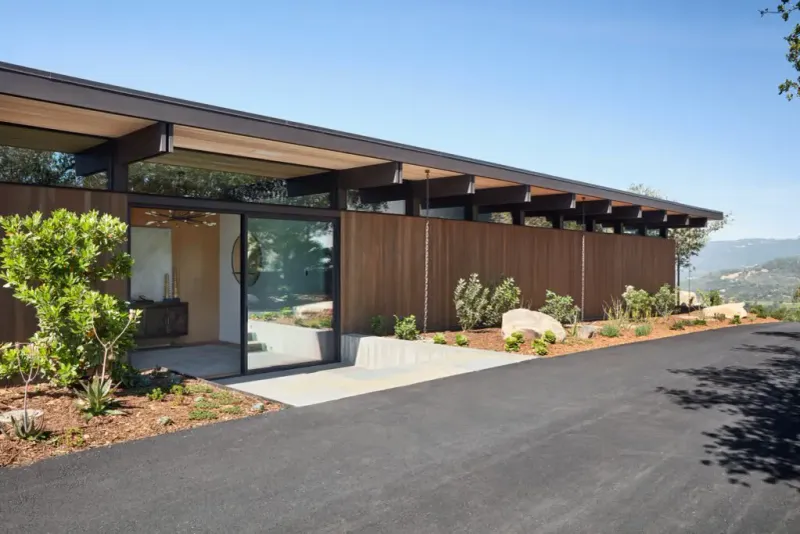
Breaking away from steep traditional rooflines, architects embraced horizontal planes that seemed to float above walls. Such distinctive profiles immediately signaled a modern sensibility.
More than just stylistic choices, these roofs allowed for clerestory windows that brought light deep into interiors. Dramatic overhangs created shade while extending living spaces visually outward, embodying the period’s fascination with horizontal expansion.
6. Emphasis on Functionality
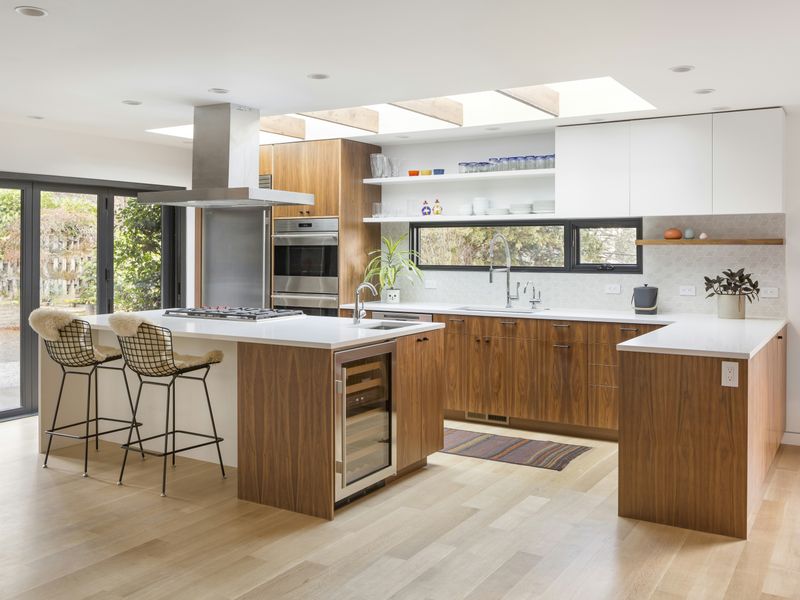
Form followed function in every aspect of mid-century design. Architects rejected decorative elements that served no purpose, creating spaces that worked brilliantly for everyday living.
Built-in storage eliminated clutter while saving space. Kitchens featured efficient work triangles based on scientific studies of movement. Even seemingly stylistic choices like cantilevered elements served structural purposes, embodying the era’s practical approach.
7. Minimal Ornamentation
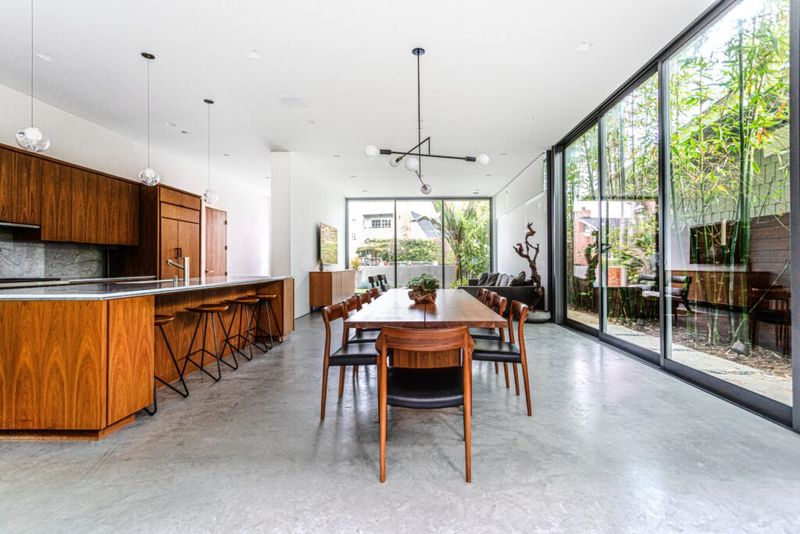
Rejecting Victorian excess, mid-century designers let materials speak for themselves. Wood remained wood rather than being disguised with heavy carving or paint.
Beauty emerged from honest expression of structure and materials. Exposed beams, visible connections, and straightforward construction methods became aesthetic features. Such authenticity resonated with post-war values of truthfulness and directness in both materials and design.
8. Indoor-Outdoor Living
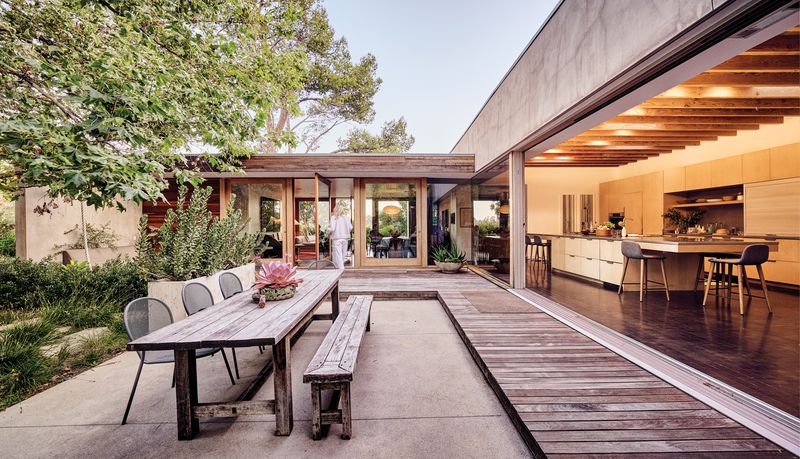
Patios, decks, and terraces became extensions of indoor spaces rather than separate entities. Sliding glass doors created seamless transitions between living rooms and outdoor entertaining areas.
California architects like Richard Neutra pioneered this approach, which spread nationwide. Outdoor furniture matched indoor aesthetics, while pergolas and overhangs created intermediate spaces that weren’t quite inside or outside—expanding usable living area regardless of weather.
9. Use of Natural Materials
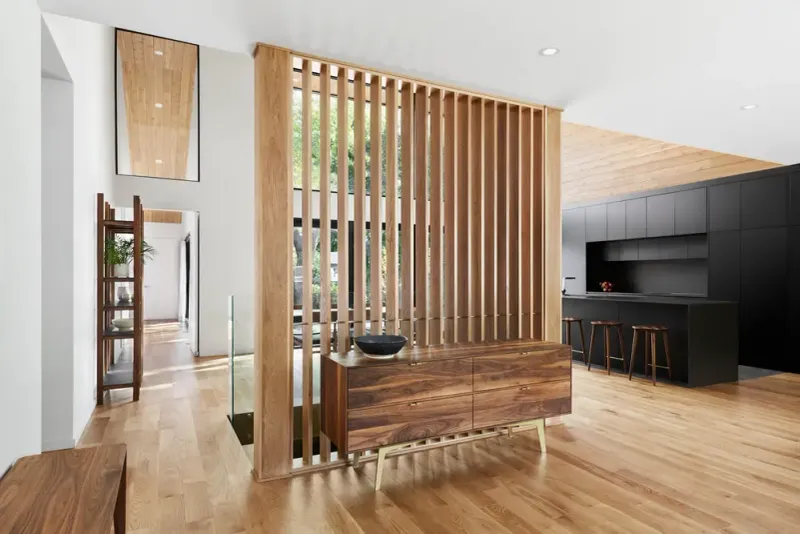
Wood, stone, and brick appeared in honest, unadorned forms throughout mid-century homes. Designers celebrated natural grain patterns and textures rather than hiding them.
Warm-toned woods like teak, walnut, and oak softened otherwise modern spaces. Stone walls provided textural contrast to sleek glass expanses. Such material authenticity created spaces that felt simultaneously modern and timeless, technological yet grounded in nature.
10. Iconic Furniture Designs

Sitting in an Eames lounge chair or perching on a Saarinen tulip stool became markers of cultural sophistication. Furniture designers created pieces so revolutionary they transcended mere function to become artistic statements.
Molded plywood, fiberglass, and bent metal enabled previously impossible forms. Many designs from this era remain in production today, commanding premium prices and appearing in museums worldwide—rare examples of mass-produced items achieving genuine artistic significance.
11. Affordable Mass Production
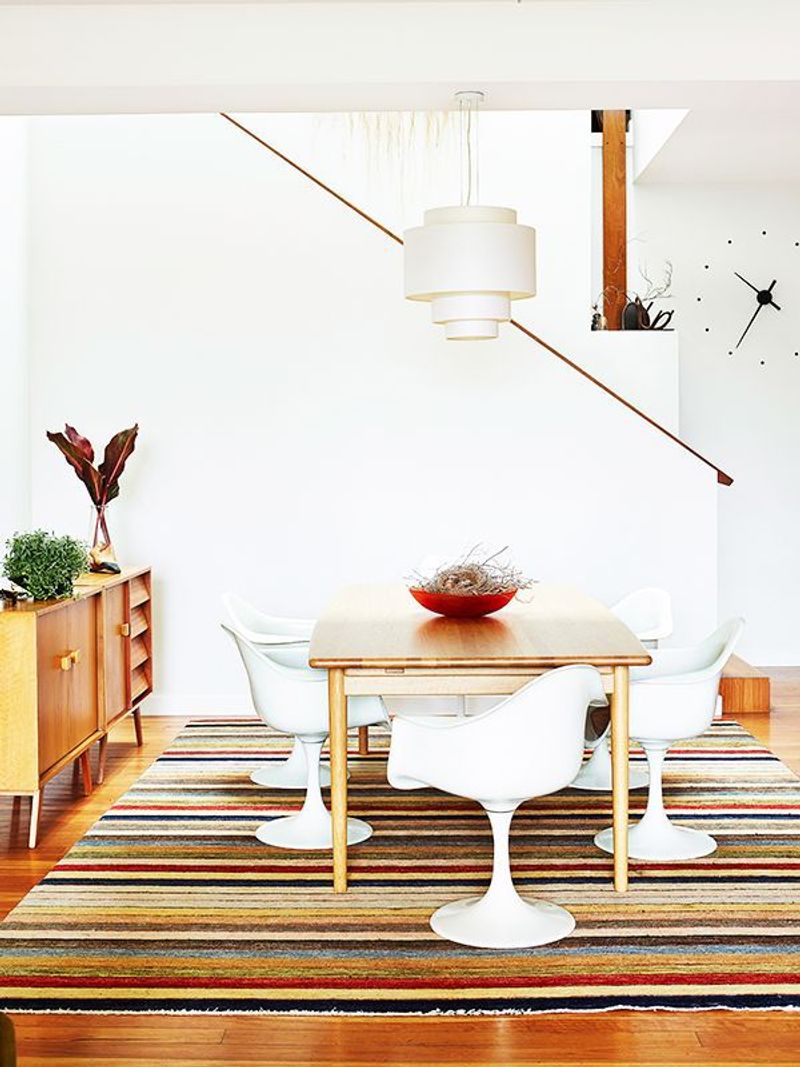
Wartime manufacturing advances allowed good design to reach average households for the first time. Companies like Herman Miller and Knoll produced designer pieces at scale, democratizing access to modern aesthetics.
Prefabrication techniques reduced construction costs for homes too. Suddenly, middle-class families could afford cutting-edge design previously reserved for the wealthy, spreading mid-century modern ideas across economic boundaries and into suburbs nationwide.
12. Post-War Suburban Expansion
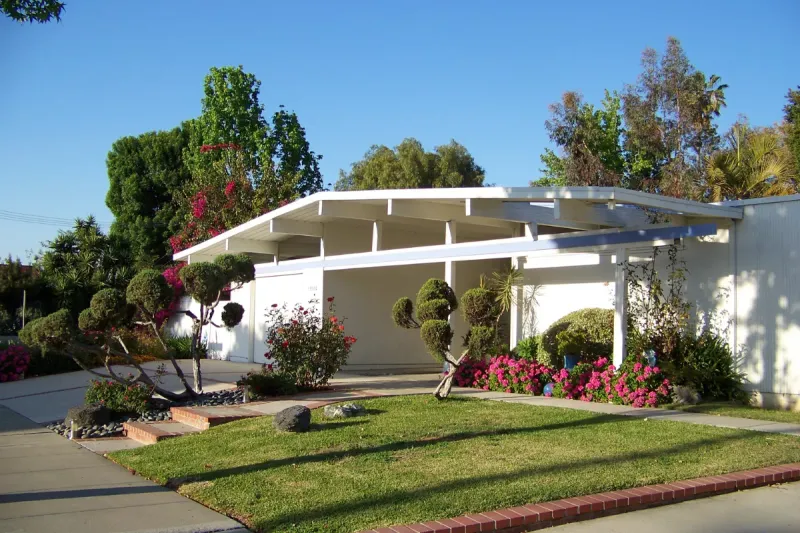
Returning GIs needed housing fast, creating unprecedented demand for new construction. Developers like Joseph Eichler built entire neighborhoods of affordable yet architecturally significant homes.
Levittown and similar developments adopted simplified mid-century elements for mass appeal. Baby boom families embraced these modern spaces that reflected optimism about the future. Suburban expansion thus became the perfect vehicle for spreading mid-century design principles nationwide.
13. Influence of Bauhaus Principles
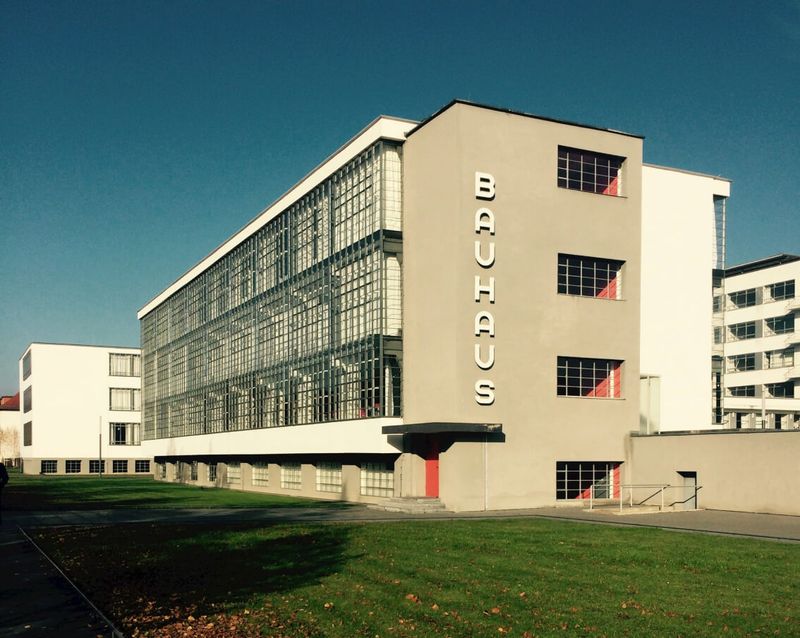
When Nazi persecution drove Bauhaus masters like Mies van der Rohe to America, they brought revolutionary ideas that transformed architecture education. Students absorbed principles of rationality, material honesty, and functional design.
American mid-century modernism evolved from these European roots. Academic institutions like Harvard’s Graduate School of Design became laboratories for modern architecture. Graduates spread these ideas nationwide through commercial and residential projects that redefined American visual culture.
14. Popularity Through Pop Culture
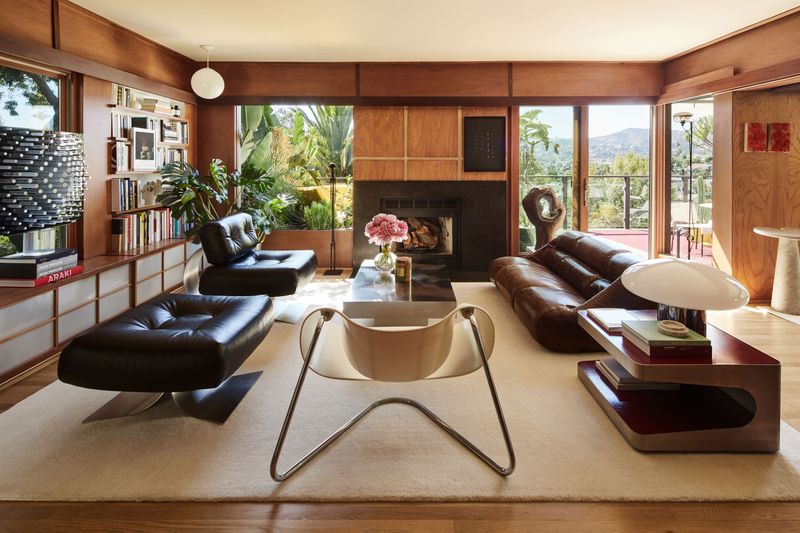
Movies and television shows positioned mid-century interiors as aspirational settings for modern living. Characters in sleek offices and stylish homes reinforced connections between modernist design and success.
Magazine spreads showcased celebrity homes with floating staircases and conversation pits. Even advertisements featured modern backdrops to sell everything from cigarettes to appliances. Through constant media exposure, mid-century aesthetics became synonymous with sophistication and forward-thinking.
15. Revival in Contemporary Design
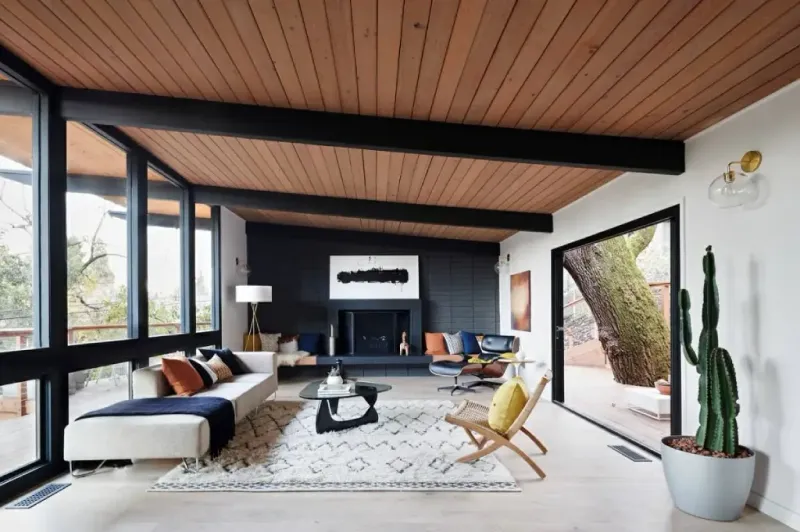
Around the millennium, young homebuyers rediscovered mid-century charm. Original homes became coveted properties commanding premium prices in hot markets.
Television shows like “Mad Men” reignited fascination with the era’s aesthetics. Furniture manufacturers reissued classic pieces while contemporary designers created new works with mid-century inspiration. What began as nostalgia evolved into lasting appreciation for principles that remain relevant in today’s design landscape.
16. Enduring Appeal of Retro Aesthetics
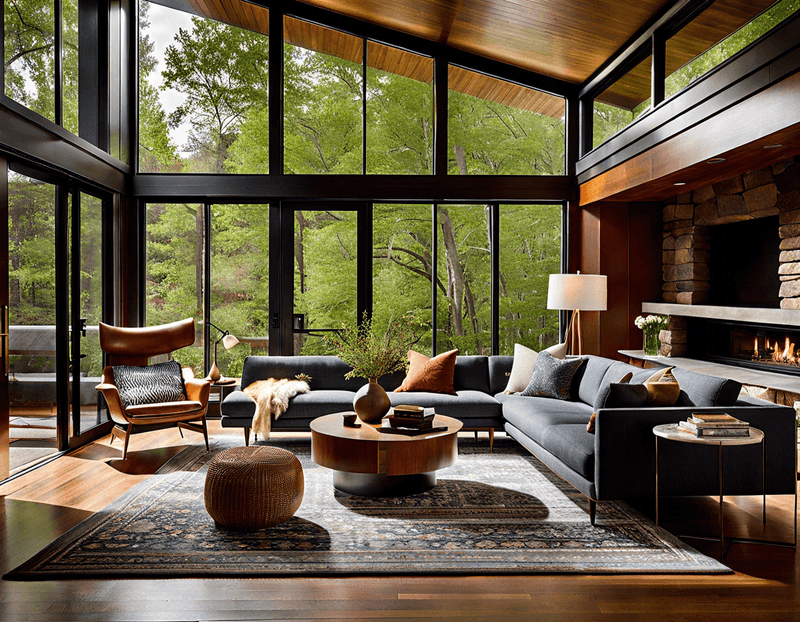
Generations removed from its origins, mid-century design continues attracting devotees across age groups. Something about its optimistic futurism paired with natural warmth resonates across decades.
Collectors hunt vintage pieces while manufacturers produce new interpretations. Social media accounts dedicated to mid-century appreciation boast millions of followers. Unlike many architectural movements relegated to history books, mid-century modern remains vibrantly alive in contemporary living spaces worldwide.
